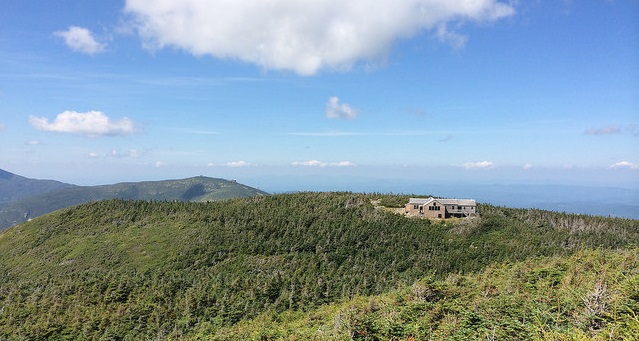One reason some of us get away into the wild is to escape, sometimes far enough to behold a viewshed free of pollution. Many people have fought housing developments and high rises etc. for the same reason. Do huts and lean-tos get a free pass, why? I assume site planning discussions take place, but given the placement of some shelters on the landscape (links below) I’d say some of those discussions were short on vision.
Some trail huts do major damage to viewsheds. New Hampshire comes to mind:

There are very few places that are truly remote. In fact, 6 miles is about as deep as we can get from any road in the “wilderness”: Wilderness Area Remote Spots. I am guessing that shrinks to nearly zero if you count trails, which can at times appear as a scar across a viewshed. The hut in the image above sits less than 3 miles from a major road.
It’s hard enough escaping noise from cars and planes in the “distance,” not to mention their streaks across the sky. We can’t move homes, roads, and buildings in the distant background, but do we really need a hut in the foreground of escape and solitude? Why put a shelter within eyesight of the trail, or more to the focal point, intruding into a vista’s viewshed? Why not hide or bury huts, and lean-tos as well, as to not pollute viewsheds? Why not tent or hammock up instead, or hit a road, which we know are not that remote, to find a campsite or hotel/hutel?
Shelter structures can be a welcome sight of refuge or relief, and have to be visible to some degree, but why should we suffer the slings and arrows (of outrageous fortune in some cases) when we don’t have to? Sure, if hidden in a sea of trees the people staying in them can’t enjoy the view from the comfort of the hut or lean-to, but the uncomfortable irony is palpable from the comfort of the trail.
Some of these scenes are idyllic, some bothersome: